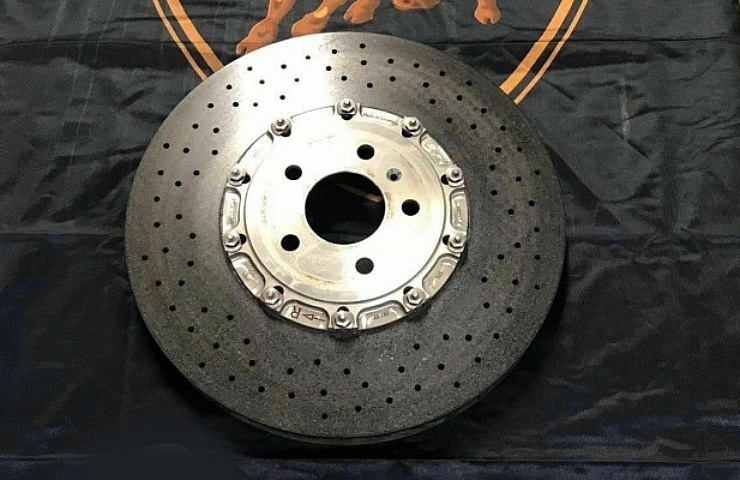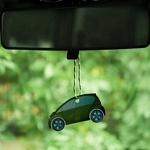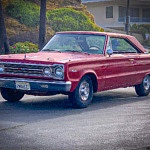Contents
The condition of your brake rotors is critical for stopping a vehicle safely. When your car takes longer to stop than before, or the brakes begin to squeak, it’s time to consider replacing your rotors. Here’s a roundup of the different types of brake rotors.
Rotor Fundamentals
A rotor is an integral part of a disc brake system. It’s essentially a metal ring that bolts to the car’s spindle—the part of the suspension that holds the wheel hub.
Two pads are positioned over the rotor. When the brakes are activated, the pads squeeze the rotor to stop the car. Disc brakes are common in most modern vehicles, especially on the front wheels, where most of the weight shifts during braking. The front brakes do about 70 percent of the work.
Time for a Brake Rotor Replacement?
How do you know when a brake rotor wears out? It takes a longer time and more distance to brake than it did before—and the rotors might start to squeak.
Warping can also be a problem. This is caused by excessive heat applied to the brakes. If you feel the car shudder when braking, that’s a sign that the rotors are warped.
Old rotors could be machined (or “turned”) to create a new smooth face. But brake shops might not want to re-work thin rotors. See: “Brake-Rotor Problems: Machining Versus Replacing.”
Shops might recommend replacing the old rotors with new ones. That’s your chance to improve your stopping power dramatically—and to make a subtle visual statement with attractive and clean brake rotors. Many rims provide a curbside view of the rotor and pads. That’s why enthusiasts like to dress up the rotors—and show off their cool performance-braking tech. And the common vented, drilled, and slotted brake rotor types contribute to the brake system style. See: “Brake Bling.”
eBay has an extensive selection of vented, drilled and solid brake rotors. Before you start shopping, it’s a good idea to do a brake rotor comparison of various designs.
A brake replacement kit can be a good option. If you need to replace rotors, there’s a good chance that your pads also need replacing. Many vendors offer a matched set of rotors and pads designed to work well together.
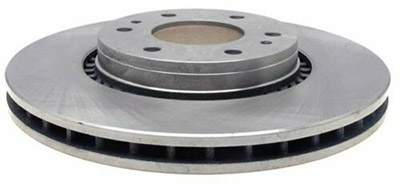
The ribs between the two metal discs allow heat to escape.
Brake Rotor Comparison
Vented Brake Rotors
A standard rotor is typically one piece of metal. With a vented rotor, there are two pieces of metal with vanes (or metal ribs) in between them. Think of vanes as fan blades that help circulate air around the rotors. When brakes are applied, heat is generated. A vented rotor helps to dispel the heat faster.
The vanes can be straight or “directional.” Directional vanes, which have a slight twist, send the air in a strategic direction—often doing a better job of cooling the brakes. If you buy directional rotors, be sure to place them on the correct side of the car.
A pair of directional, vented brake rotors will have one each for the left and right sides. A directional rotor should be oriented toward the rear of the car.
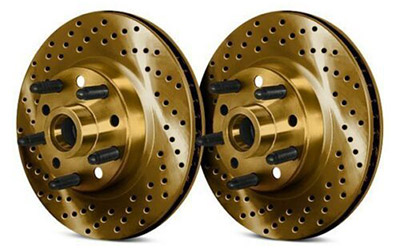
Drilling holes in a rotor reduces the weight.
Drilled Brake Rotors
The first generation of disc brakes, in the 1960s, had holes drilled through the face. The chief benefit of drilled rotors is to allow heat and gasses to escape. Drilling also reduces the weight of the rotor. The holes serve another purpose: They help refresh the pads when they go around.
You still see holes drilled in brake rotors today. Some manufacturers now offer a drilled rotor with a chamfer or beveled end—rather than drilling entirely through the rotor.
However, debris can get caught in the holes. The debris can produce brake squeaks. In a worst-case scenario with this type of rotor, the brake pads as well as the rotors can get scored (with deep grooves that make them less efficient).
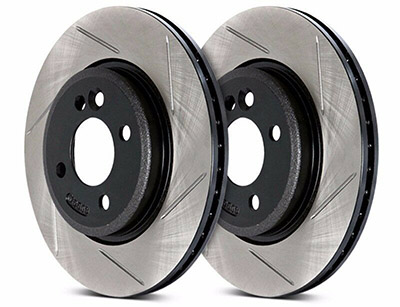
The slots in a rotor provide a way for gasses to escape.
Slotted Rotors
A rotor can also use a series of slots, often with a twist. Like drilled rotors, the slots allow gases and heat to escape while braking. Because the slots are generally shallow and don’t go through the entire rotor, it’s less likely that debris will stick to the rotor.
Some manufacturers offer slotted rotors that cut through the whole rotor. Since less metal is removed compared to drilled rotors, there is also less chance of a rotor cracking under extreme use.
In another “drilled vs. slotted rotors” balancing act, manufacturers commonly offer a combination of drilled and slotted rotors are common. They can look very stylish.
Brake Rotor Materials Compared
All brake rotor types are offered in a variety of materials from base iron to carbon fiber.
- Iron rotors are the least costly to produce but are the heaviest.
- Steel is a common replacement because it’s lighter, thinner, and handles heat better. But that thinner shape means they can warp easier.
- Aluminum is a favorite with motorcycle racers but can warp faster and are not as well-suited to heavier vehicles.
- High carbon rotors dissipate heat faster but come at a higher price.
- Carbon fiber brake components are commonly used on exotic sports cars. But they are considerably more expensive.
Best Brake Rotor Coating
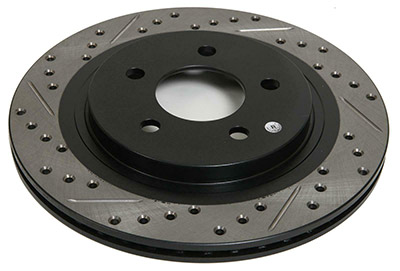
While the black paint initially reduces rust and corrosion, the paint will eventually wear away. Coating is the answer.
Most rotors today are carefully machined for performance and durability. But what distinguishes them is how they protect against corrosion.
Rotors are usually made with steel, so they are susceptible to rust. The areas where the pads grab the rotor often remain clean. But the rest of the rotor can get rusted. To prevent this from occurring, manufacturers add zinc or a similar coating.
Unfortunately, the grabbing action of the pads can remove the coating. Those areas are not likely to get rusted because the pads keep them clean. But rust can form when the car sits for an extended period.
Some manufacturers put a black-painted center to delay the advance of rust. This approach might slow down corrosion, but it’s only a temporary measure. The battle to prevent and remove rust never stops.
The best strategy is to buy brake rotors that are fully coated using a rich zinc-based material. Zinc coating will do the best job of keeping your rotors clean, rust-free, and looking sharp.

